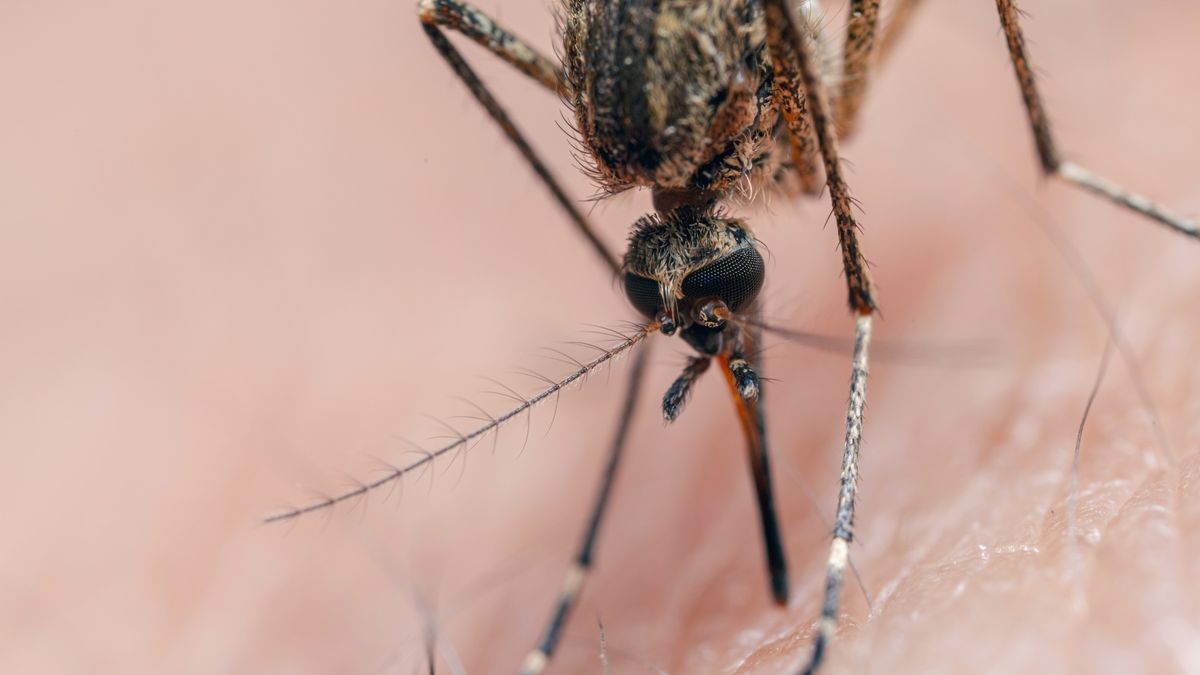A mosquito-spread virus nicknamed “triple E” recently killed a man in New Hampshire and sickened several people in other Northeastern states. The Massachusetts town of Plymouth recently began closing its public parks between dusk and dawn to help cut the risk of people catching the infection.
So what is triple E, and is it new to the northeastern U.S.?
Triple E is another name for eastern equine encephalitis (EEE), a potentially deadly viral illness that people can catch from mosquitoes. The virus behind the disease is called the EEE virus, or simply EEEV.
The disease is called “equine” because horses can also catch the viral illness, and in fact, EEE was first discovered among Massachusetts horses in 1831. The first human cases of the disease were documented about a century later, and since then, sporadic cases and clusters of infection have occurred, primarily along the Atlantic and Gulf coasts in the summer. Although EEE is rare, it is considered endemic to the U.S.
Related: The skin microbiome could be harnessed as mosquito repellent, study hints
In recent years, there have been between one and 15 cases a year nationwide. 2019 was a notable exception, with 38 cases, but it’s not clear why so many EEE cases were detected that year.
This year, various states — including New Hampshire, Vermont, Massachusetts and New Jersey — each reported their first case of EEE in several years. In addition, a person was hospitalized in Wisconsin after catching the virus in a New England state, The New York Times reported. A total of six cases have been reported so far in 2024, although only four have been listed on the Centers for Disease Control and Prevention (CDC) website so far. (This lag is expected because the CDC has to confirm each case.)
All six cases have been linked to states where the virus has previously sickened people. One person died of the infection, according to current reports.
The mosquito species Culiseta melanura passes the virus that causes EEE to birds, whose blood it feeds on. From there, other mosquito species bite the birds and later pass the virus to mammals, including horses and humans. People can get the virus only from a mosquito bite, not from infected people, horses or birds.
Data suggest that most people exposed to the virus through a mosquito bite don’t have any symptoms. When people do get sick, they may have fever, chills, body aches and joint pain, or a more serious illness in which the virus invades the central nervous system, meaning the brain and spinal cord.
Most people recover from the febrile form of the illness, which doesn’t enter the central nervous system, within one to two weeks, according to the CDC. However, when the virus gets into the tissues in and around the brain and spinal cord, it’s deadly in about one-third of cases. Less than 5% of febrile cases progress to the neuroinvasive kind, the CDC says, so the severe cases are rare.
In the neuroinvasive cases, people typically die within two to 10 days of their symptoms starting. Some of the early symptoms overlap with those of the febrile form of the disease, since the illness progresses from febrile to neuroinvasive. The symptoms can include fever, headache, vomiting, diarrhea, seizures, behavioral changes, drowsiness and coma. Those who survive are often left with long-term physical or mental disabilities, and many ultimately die of those complications within a few years.
There are no vaccines or specific treatments available for people with EEE. Those with the neuroinvasive form of the disease may need to be hospitalized to receive supportive treatments, such as intravenous fluids and pain medicine.
The best way to prevent EEE is to avoid mosquito bites. The CDC recommends using insect repellent and wearing long-sleeved shirts and pants when outdoors in places where the virus is known to be present. Using air conditioning and putting screens on windows and doors can help stop mosquitoes from getting indoors, as can eliminating sources of standing water in and around the home.
Some affected states, such as Massachusetts, are spraying insecticides in areas where the EEE virus could feasibly spread to people, such as places where the virus has been detected in mammal-biting mosquitoes and in local horses.
As of yet, the number of EEE cases has not been unusual this year, since an average of about 11 are reported yearly in the U.S. But because the rare disease can be deadly, health authorities are urging people to practice mosquito-bite prevention and doctors to be aware of the disease.
This article is for informational purposes only and is not meant to offer medical advice.
Ever wonder why some people build muscle more easily than others or why freckles come out in the sun? Send us your questions about how the human body works to community@livescience.com with the subject line “Health Desk Q,” and you may see your question answered on the website!
